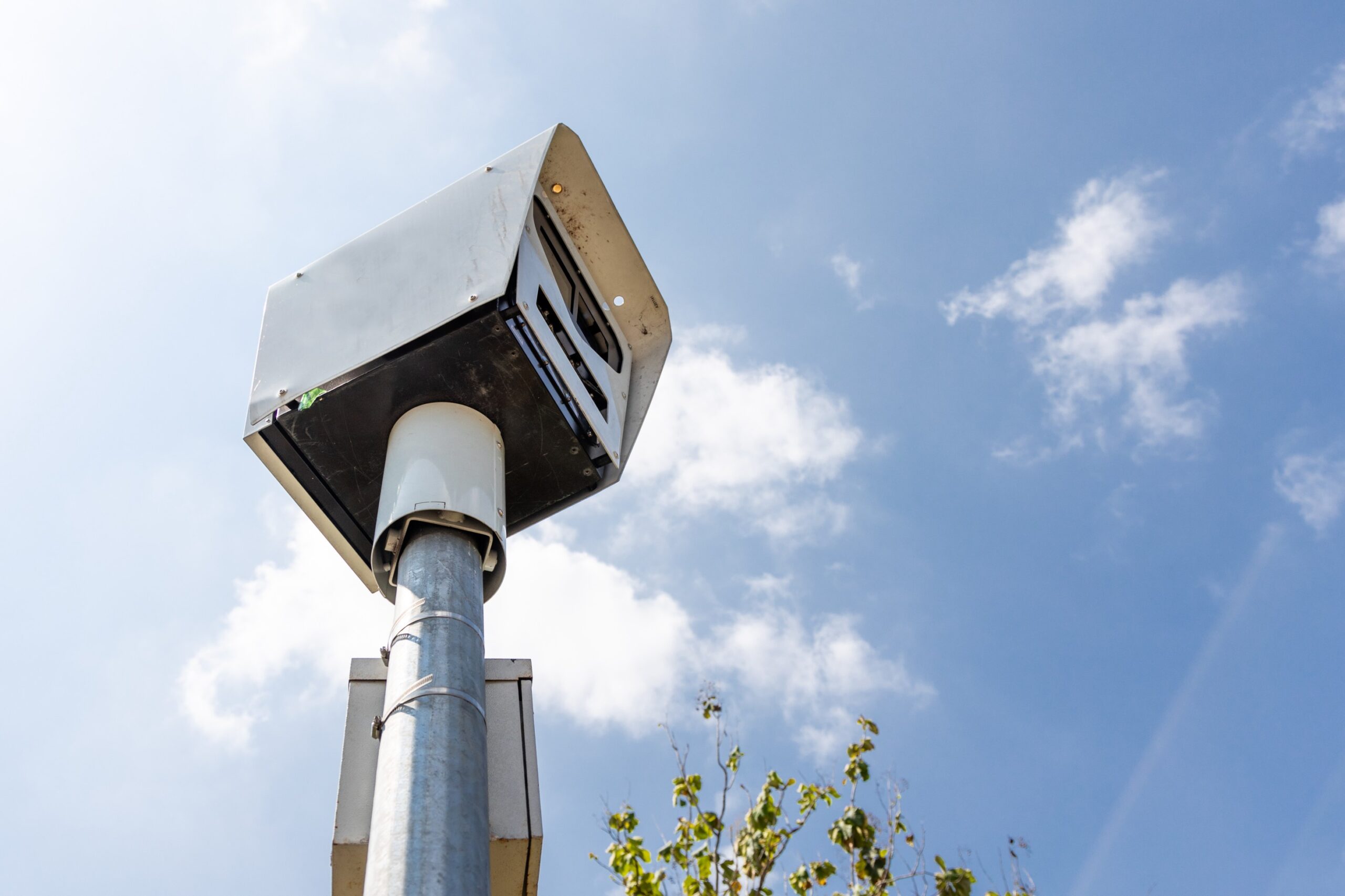What Is Multi-Directional Radar and How It Works in Kansas City

Understanding Multi-Directional Radar
Multi-directional radar is a high-tech type of speed detection technology utilized by the Kansas City police. Multi-directional radar can monitor vehicles going in more than a single direction at one time. Unlike ordinary radar, which only catches oncoming or passing traffic, multi-directional radar catches both.
This helps law enforcers identify speeding cars coming from any direction — front, back, or side — without even having to shift the radar. It gives police greater control in busy intersections, highways, or multi-lane roads where cars move in different directions at once.
More traffic in Kansas City requires such technology for speed enforcement. The objective is simple: promote safety and prevent accidents through accurate detection of speeding drivers.
How Multi-Directional Radar Works
The basic working principle of radar technology is the Doppler effect. A radar sends out a radio wave, which bounces back from moving vehicles. The radar then measures the shift in wave frequency. The shift tells the radar how fast the vehicle is going.
In multi-directional radar, multiple antenna beams are used at the same time. Each beam can track a different lane or direction of travel. The radar’s internal processor splits each signal to identify which vehicle is traveling and how fast.
For example, a patrol car on a median can track cars traveling eastbound and westbound. The system automatically detects each vehicle’s movement and direction without officer adjustment.
The Kansas City police are relying on these radars because they provide precise readings even in dense traffic. The system can read more than one car, which reduces the likelihood of obtaining false readings.
Types of Multi-Directional Radar Utilized in Kansas City
Kansas City police use several radar models that possess multi-directional capabilities. The most widely used models available are:
- Stalker Dual DSR: Mounted on both fixed and moving patrol cars.
- Decatur Genesis II Select: Offers independent front and rear readings.
- Kustom Golden Eagle II: Features traffic mode in the direction of the radar and direction away from the radar.
All of these units are law enforcement certified and Missouri state and federal compliant. Automatic calibration tests, strong signal processing, and simple-to-read digital displays are included in all the models. Officers can easily switch between modes at high speed, depending on the patrol area.
The Role of Multi-Directional Radar in Traffic Enforcement
Multi-directional radar speeds up traffic enforcement, renders it safer, and more reliable. Police in Kansas City employ the systems where traffic moves in various directions — like downtown streets, highway ramps, and congested intersections.
The radar can detect speeding cars in either direction, even when the officer’s vehicle is facing one direction. This versatility makes it possible to monitor more space and apprehend more offenders. It also enables police officers to stay in safer positions while still monitoring speed.
Multi-directional radar readings are often accepted as legal evidence in Kansas City traffic courts. Because the system can distinguish signals by direction, it is not going to mistake a speeding car.
Police officers are taught to verify each reading visually before issuing a ticket. This ensures the radar readings are accurate and reflect what they actually observe on the road.
Calibration and Accuracy Requirements
As with all radar devices, multi-directional radar must have standards of precision. Police in Kansas City must align their equipment beforehand and after every shift. The calibration tests are run using tuning forks that are calibrated to certain speeds.
If the calibration does not work on the radar, officers cannot operate it until it is fixed. The maintenance records are preserved so that every unit of radar is properly serviced. These records become active if there is a case of speeding in court.
Kansas City traffic legislation requires radar readings to be unambiguous, precise, and sufficiently substantiated. In the event of any likelihood of error — such as interference, malfunctioning calibration, or human errors — the radar proof can be challenged in court.
Advantages of Multi-Directional Radar
Multi-directional radar offers a variety of benefits to the Kansas City police:
- Spanning more than one lane: Reads multiple vehicles moving in opposite directions.
- Rapid detection: Reads speed immediately with less preparation.
- Greater accuracy: Discriminates signals by direction to avoid confusion.
- Greater safety: Officers can stay in one safe location to monitor traffic.
- Court-acceptable evidence: Makes accurate, consistent readings that hold up in court.
All of these capabilities come together to make multi-directional radar among the most trustworthy devices employed by traffic enforcement officers today.
How Weather and Environment Affect Radar
Environmental factors like heavy rain, snow, fog, or shiny surfaces can impair radar waves. Kansas City’s seasonal weather can lead to conditions under which the reliability of radar can vary.
In a bid to reduce errors, officers are taught to adjust radar settings and sweep for possible interference. They must also make sure that there are no massive objects — for instance, metal billboards or vehicles — directly in front of the radar.
Training ensures that even in inclement weather, radar readings remain valid and reliable. Kansas City police follow national standards of radar usage guidelines of the National Highway Traffic Safety Administration (NHTSA) and the International Association of Chiefs of Police (IACP).
Multi-Directional Radar and Kansas City Drivers yield
For Kansas City drivers, an understanding of radar technology can be their lifeline, protecting them from speeding fines. Multi-directional radar improves detection rates, meaning even drivers going the opposite direction can be clocked.
The best way to avoid the penalty or fine is simple — follow posted speed signs. Multi-directional radar reduces arguments over which vehicle was speeding because it can distinguish between each direction clearly.
However, drivers who believe they were improperly ticketed can appeal the ticket in traffic court. A traffic defense firm like Speeding Ticket KC can review radar reports, calibration, and officer training records to look for errors.
Future of Radar Enforcement in Kansas City
Radar technology continues to improve. Kansas City can install more automated radar devices connected to data networks and dash cameras. These can record vehicle speed, time, and direction automatically for precise documentation.
Even with developing technology, the very reason never wavers — making Kansas City’s roads safe for all on the road. Multi-directional radar is a giant step in that direction.
FAQs
1. How is multi-directional radar different from normal radar?
It can follow cars in several directions simultaneously, as opposed to conventional radar that follows one direction.
2. May the Kansas City police employ radar while in motion?
Yes. Mobile radar can follow speeds as the patrol vehicle moves, particularly with double-direction units.
3. Is multi-directional radar accurate?
As accurately as possible when calibrated, especially considering errors often result from weather, interference, or abuse.
4. Can a speeding ticket from radar be challenged in court in Kansas City?
Yes. Tickets can be challenged based on failure of calibration, training, or operation to meet certain requirements.
5. How does Speeding Ticket KC help with speed tickets written based on radar?
They review records for radar calibration, training details, and evidence to build a solid defense.
Final Thoughts
Multi-directional radar helps Kansas City police enforce traffic laws more effectively. It tracks multiple cars at once, giving unobstructed speed readings that hold up in court. For drivers, this is more accurate enforcement — but fewer excuses for irresponsible driving.
Understanding how the technology works gives Kansas City drivers the knowledge to stay safe, avoid citations, and drive responsibly.

